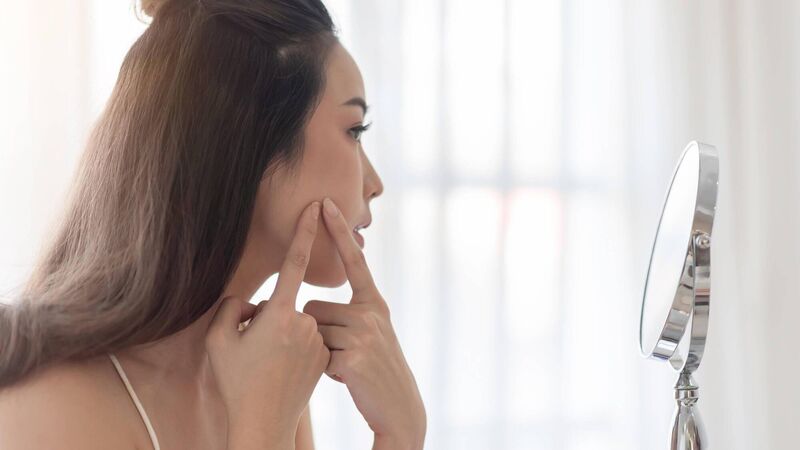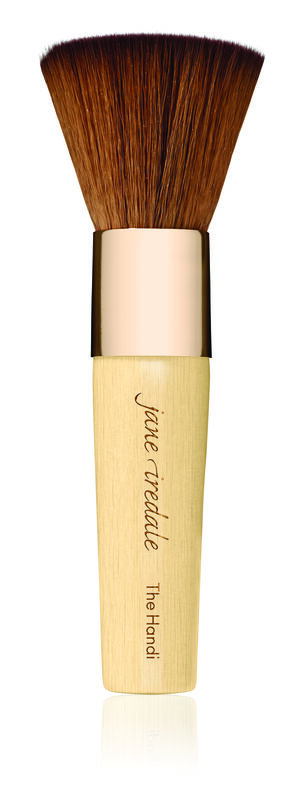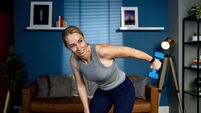Do you know what comedogenic means? The Skin Nerd explains why you need to know

Some products you're using may be comedogenic. Keep an eye on the ingredients in your skin care.
If you read about skincare and the type of skincare you should be using, you’ve come across the phrases “comedogenic” or “non-comedogenic”. Even if you’re not an avid skin content viewer, in the good old days of browsing the pharmacy aisles while waiting for your prescription, you’ve certainly seen it! But what does it mean, and does it matter?
Comedogenic comes from the word “comedone”, the nerdie terminology for a whitehead, blackhead, or a small, headless bump. Whiteheads are known as closed comedones, where the pore is fully plugged and blackheads are known as open comedones, as you can see their insides, essentially. Comedogenic is widely accepted to describe a substance that can contribute to clogged pores and potentially comedones.
Products that say “non-comedogenic” have been tested to prove that they don’t clog pores. For example, a comedogenic test from Evalulab has those being tested use the product for a month and examine for comedones before and after. This is not the only mode used, of course, but in general, tests and research are used to determine whether a formulation will or will not clog your pores. Unfortunately, it’s not that simple...
This level of testing is not required to put skincare on a shelf, and it could be considered an extra effort and expense when you’re formulating products, especially if you’re starting a range. So there are many products out there that won’t clog pores that aren’t labelled non-comedogenic!
Whether a product is comedogenic may not even matter to you if your skin does not become clogged easily. Comedogenicity tends to be something more on the minds of oilier or spot-prone folks. Ingredients are usually ranked from 1 to 5, with 0 indicating it won’t clog pores and 5 indicating that it will for most skins. I am interjecting again to say that even with this lovely simple scale, it’s still not that simple! What also matters includes the amount of the ingredient within the product, and the rest of the formulation.
With this in mind, if a product contains an ingredient that you’ve heard is comedogenic... It shouldn’t be the be all and end all. And even if a product is listed as non-comedogenic, all of our skin is entirely unique, so it’s still possible that you could break out! Where I fall on it – if a product sounds perfect for you but contains a comedogenic ingredient, give it a go and see, or try to get a sample or smaller-size of the product if you can.
In the Nerd Network online skin consultancy, we use self-trialing and more casual, colloquial data alongside educational training to inform how different skins’ fare with different products. We pride ourselves on our nerdieness, and although this is an art more than a science, it gives us an indication of what is best for the team to recommend to specific skins.
If you are genuinely prone to many blackheads or comedones of other forms, it could be worthwhile to maybe take a peek at ingredients that are considered highly-comedogenic and avoid them when they are high up on the ingredients list. Few ingredients come in at a 4 or 5 on the scale but this category includes cocoa butter and ethylhexyl palmitate, which you may see on some ingredient lists. Websites like CosDNA or INCIDecoder, for example, allow you to type in an ingredient and see its comedogenic rating very easily!
If you are dealing with breakouts and looking for guidance with regard to what you should be using, I’d suggest speaking with a skincare professional – our team of experts would love to see you as a Nerd Network member.

Pure mineral powder is widely considered to be the least comedogenic form of makeup. The application of such is definitely a bit harder to get your head around if you have been using a liquid your whole life, but with the Jane Iredale Handi Brush, your life is made much easier.
The flat head allows for even distribution of the powder across your skin in circular buffing motions - it also means you can stipple more product on certain areas for fuller coverage by holding your fingers near the top of the brush. It can also be used with pressed blushes and contour powders.

Celebrating 25 years of health and wellbeing







